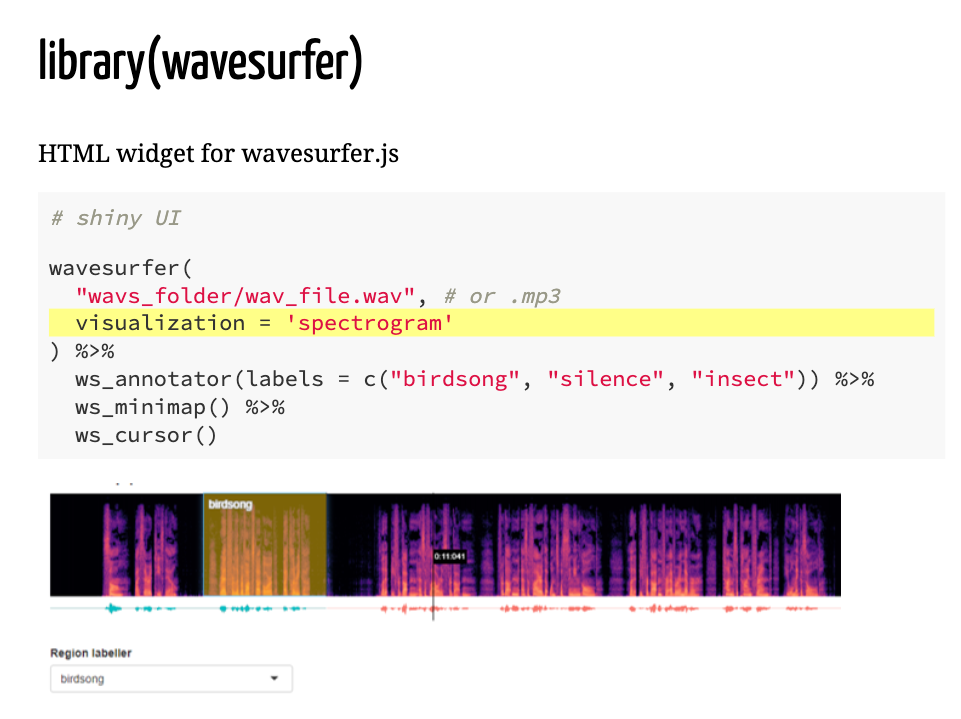I left my aRt* in San Francisco
Technically I left my stickers, but that wouldn’t have made a good pun. And even more technically, I left my headphones in Mammoth Lakes, and I was keeping the stickers in the case.
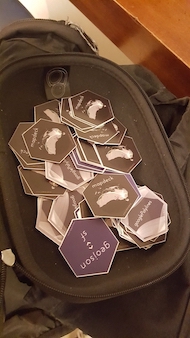
So the title should be
I left my expensive headphones in a ski resort and only realised the day before flying back to Melbourne, so I had to buy a new pair for the flight, and pay to get my ‘old’ ones shipped back.
But enough about my ineptitude, this post is actually about my thoughts, musings, opinions and tips I picked up from some of the talks from Rstudio::conf 2020
RStudio, PBC
JJ Allaire kicked things off by announcing Rstudio is now a Public B Corporation
RStudio needs to be uncompromisingly run for the benefit of all stakeholders, including employees, customers, and the community at large. Additionally, RStudio needs to earn the trust of its users, not just through its actions, but also its formal corporate charter
This is a big deal.
Object of type closure is not subsettable
Jenny Bryan’s keynote is a good lesson / reminder to all on best practices for debugging. And I would like to emphasise, if you are going to ask for help on someone’s github page or StackOverflow, follow these steps
- Restart R
- Minimise the code
- this will help find the cause of the bug, and 90% of the time you can solve the issue yourself
- don’t upload whole chunks of code for someone to wade through, it’s not helpful
- narrow the bug to a specific function or line, or row of data.
- Reproduce it
- write the specific function or code again
- Go to 1.
- You’ve probably now found and solved the bug all on your own.
Now it’s time to ask for help
- Make it reproducible
- You’ve already minimised your code to the specific line or row causing the bug
- Now make an example so someone can simply copy & paste your code into their own session
- Aim for a maximum 10-row data set, and 10 lines of code (these are my rules of thumb)
- Go to 1.
- upload your reproducible example
Data, visualization, and designing with AI
Fernanda Viegas and Martin Wattenberg gave an interesting talk on the work they’ve been doing on Google’s PAIR (people + AI) initiative, and specifically their What If tool, which looks useful for asking questions like ‘what if I changed this parameter’, or ‘what if I asked the question in a slightly different way’. The tool gives useful visuals and insight for these types of scenario modelling questions.
What also stood out for me was the U-MAP visualisation
Uniform Manifold Approximation and Projection (UMAP) is a dimension reduction technique that can be used for visualisation similarly to t-SNE, but also for general non-linear dimension reduction.
Which seems like a nice way of viewing high-dimensional data. Here’s a video on Visualising High-Dimensional Space which summarises the concept.
Shiny Themes

Because of point 4, I’m very much a point 1 person!
Fortunately Joe Cheng is adding easier styling to Shiny through Sass and bootstrap 4
So now styling your shiny is made even simpler

Which means I can now legitimately become a point 4 person!
And I’m also very excited about the experimental realtime preview
EfficientNet - Scaling CNN
Paige Bailey introduced me to EfficientNet, which
achieve much better accuracy and efficiency than previous ConvNets
At Symbolix we’ve used CNNs a lot, so this will be very useful.
Rstudio 1.3 - sneak peek
Some of the features I’m keen to use
Realtime spellcheck
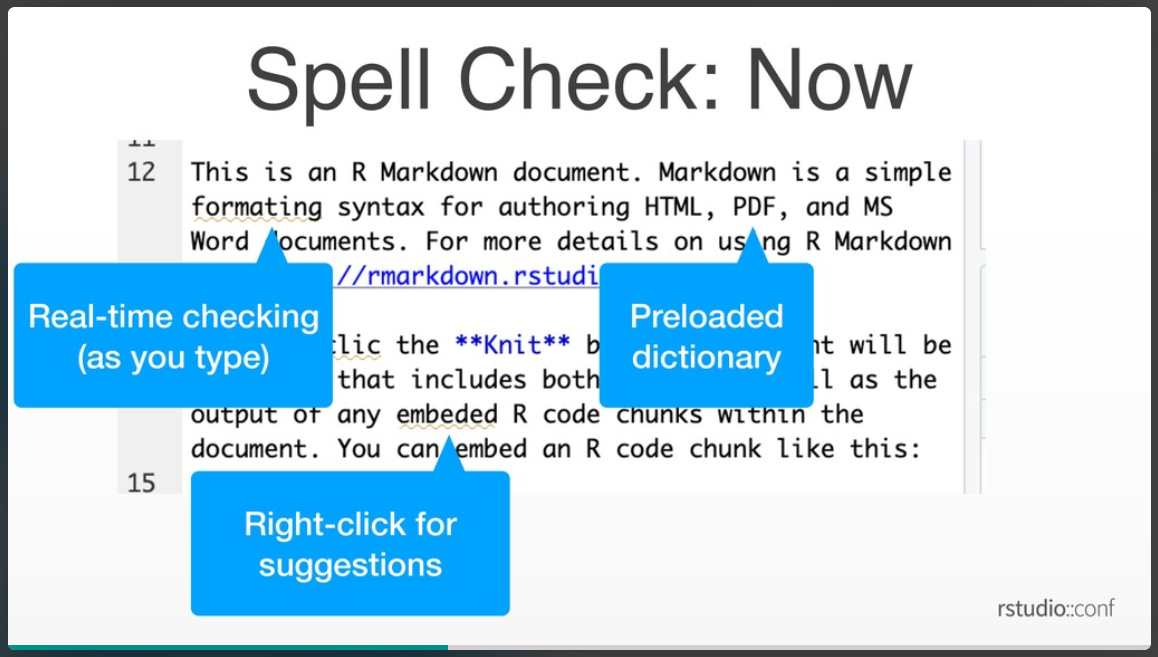
Global Replace
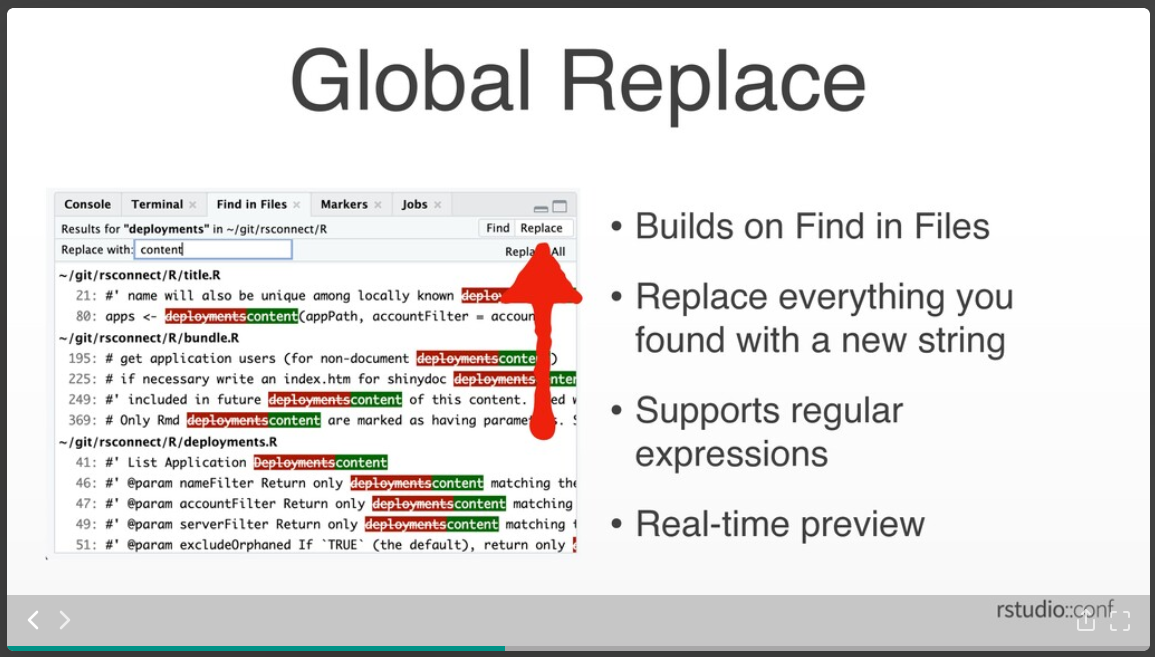
Rstudio on iPad
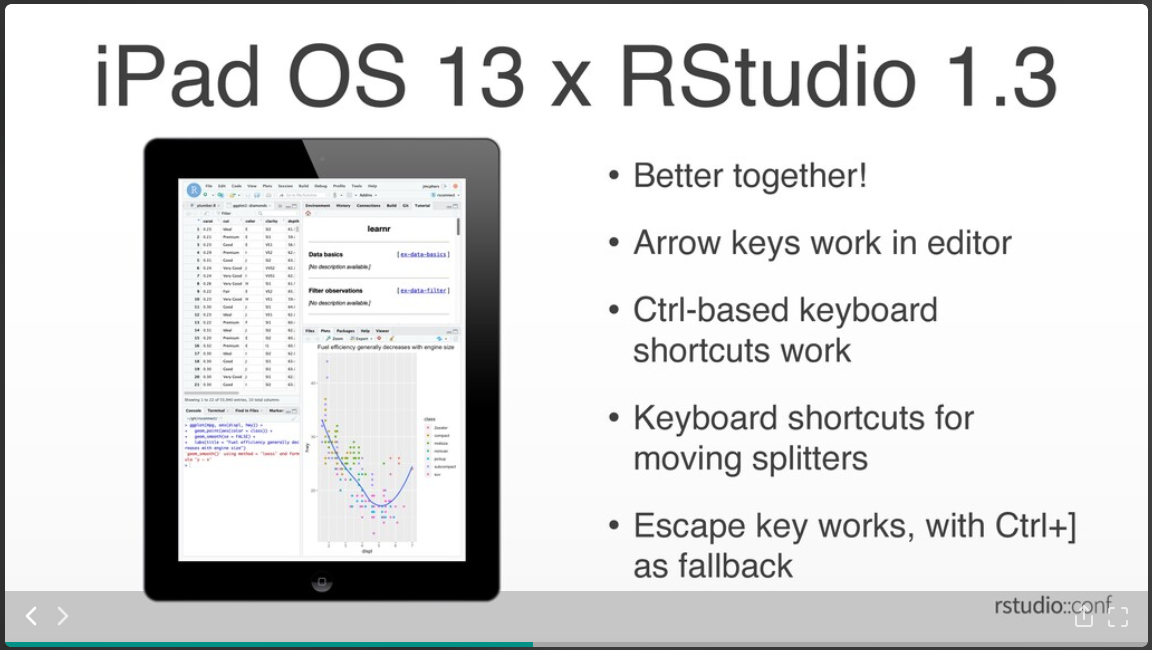
Configurable templates
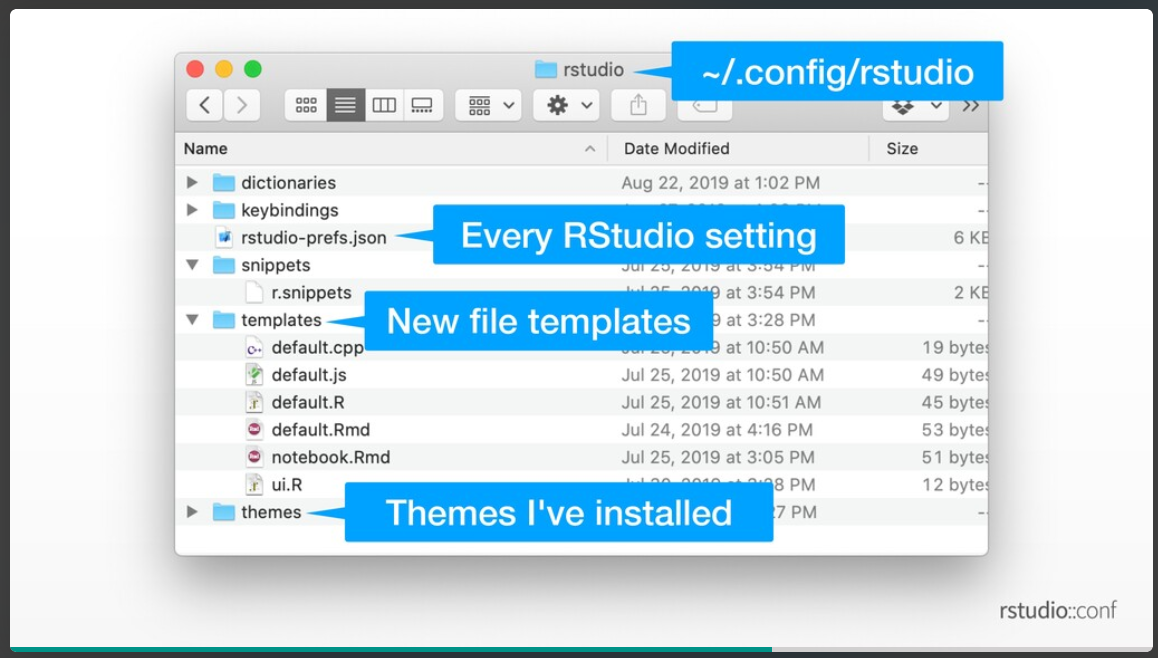
Wavesurfer
Athos Damiani demonstrated his wavesurfer package, which is exciting because you can interact with spectograms, including selecting sections of sounds you want to play and annotating them.
